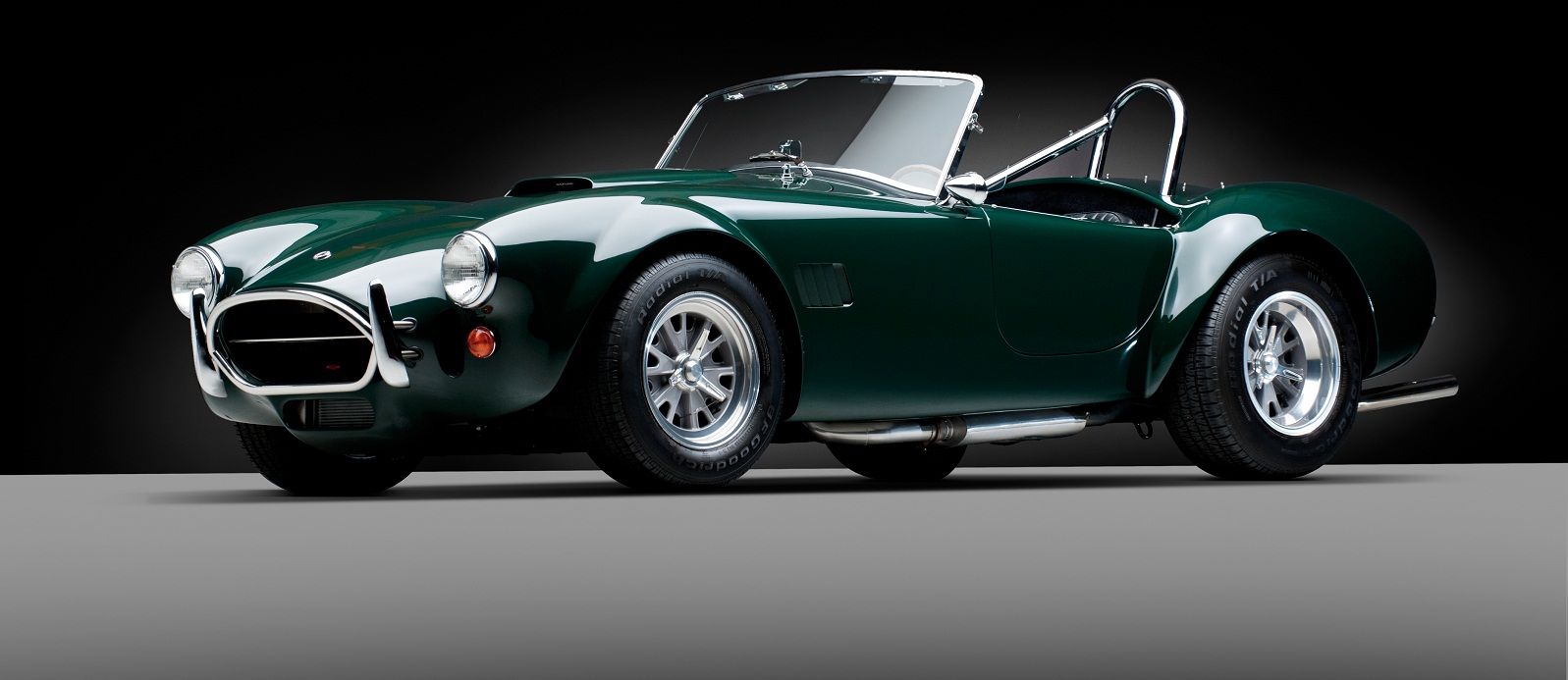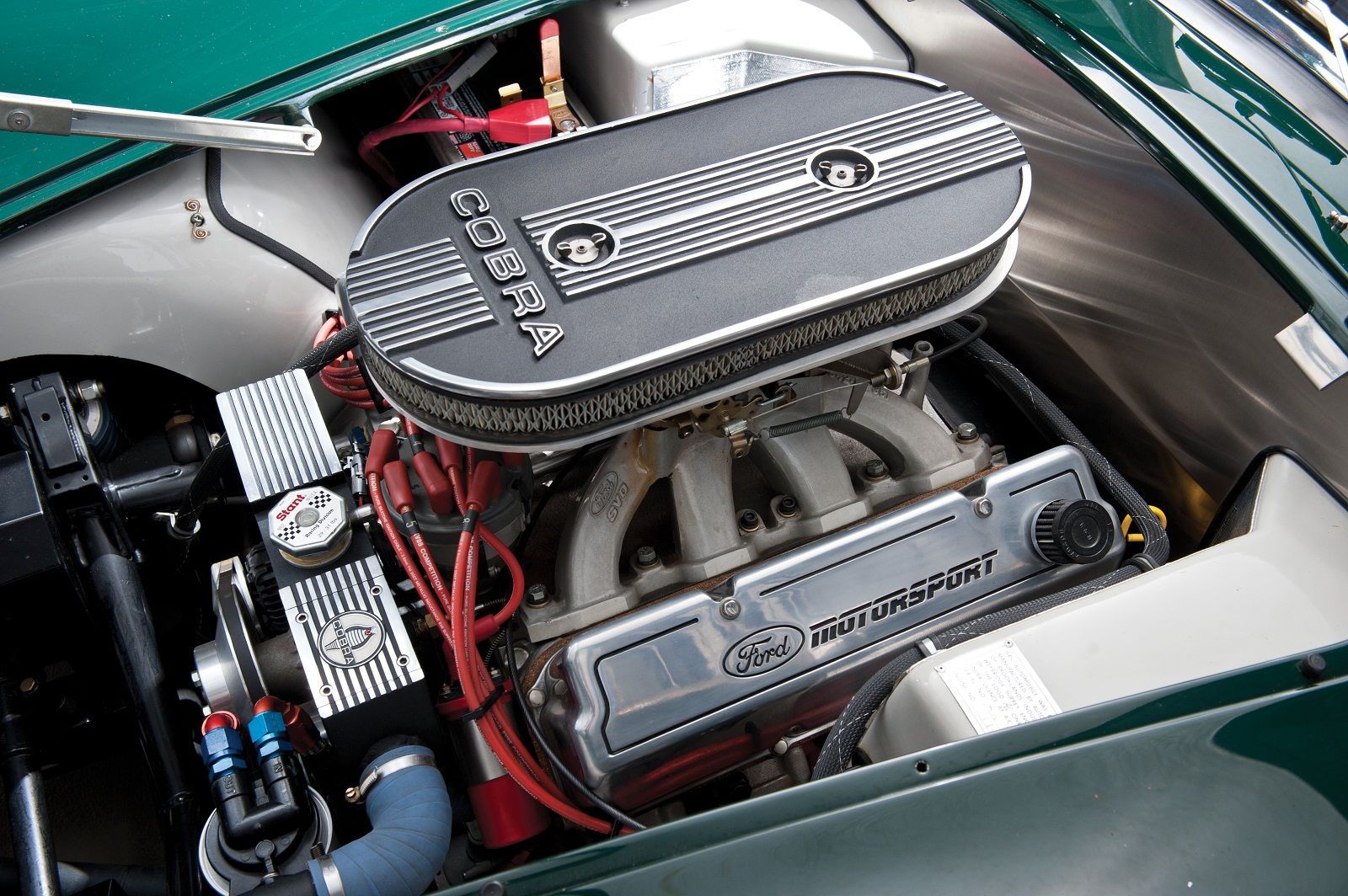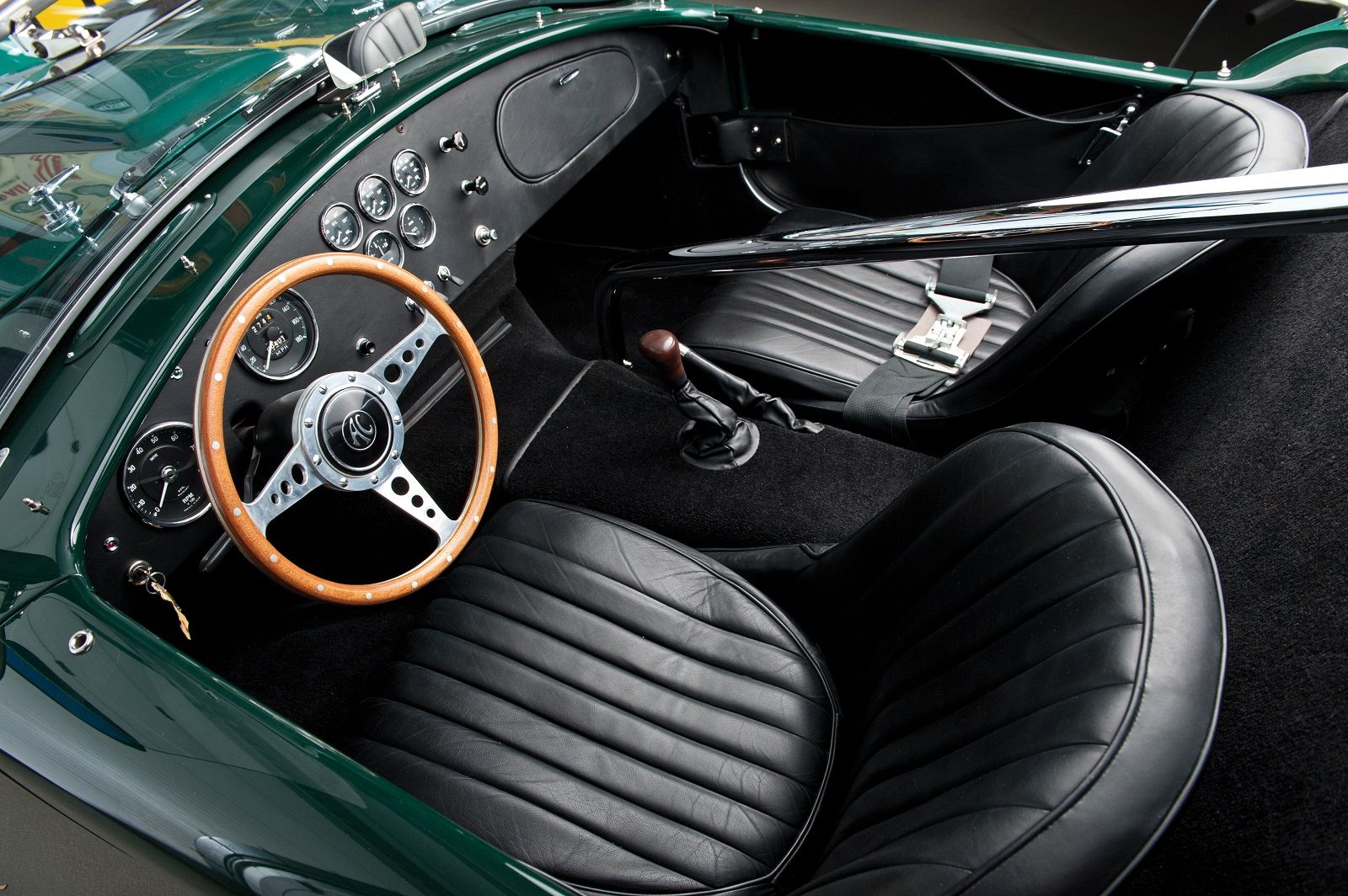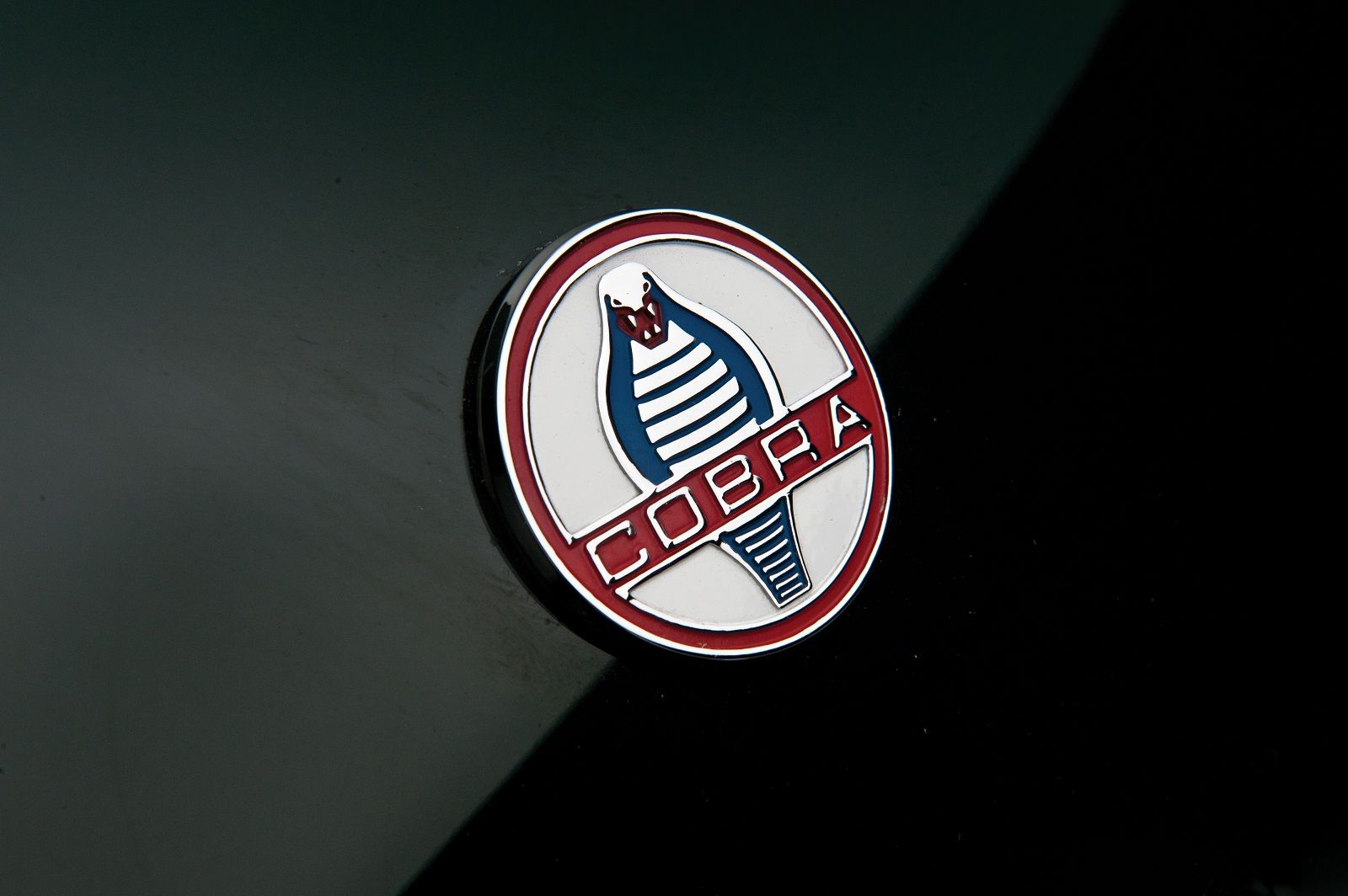The original AC->ke1355 Shelby Cobra debuted back in 1961 in a joint venture between AC, a company owned by famed racecar driver Carroll Shelby, and Ford. An interesting fact is that had it not been for Chevy trying to protect its sacred Corvette model, the AC Shelby Cobra would have ended up being a Chevy->ke199-powered machine. As it ended up, Chevy turned down AC, and Ford->ke31 stepped in to help power the Cobra.
The AC Shelby Cobra was a short-lived project that lasted only three generations between 1961 and 1967. AC managed to hang on for another 17 years before closing up shop in 1984. During the fire sale that took place following AC’s closing, Autokraft snatched up all of the toolings and spare parts of the failed company, which allowed it to become a parts reseller and replica car builder.
Autokraft’s replicas were so awesome and respectful to the history of the AC Cobra that the Hurlock family, the family that purchased the AC name, sold off its closely guarded rights to the name to Autokraft in 1986. This sale officially made all Autokraft Cobras the real deal, and not just the replicas of the past.
Staying true to the sequence of the original AC Shelby Cobras, Autokraft dubbed this model the AC Cobra MkIV – the prior three Cobras were dubbed MkI, MkII, and MkIII. Despite the fact that the MkIV Cobra was produced for a decade, only 480 models ever made it to the street, making this sometimes called “kit car” just about as rare as the original Shelby version.
With how rare these cars are, it is typically a once-in-a-lifetime opportunity to snag one up. Well, RM Auctions is making this a possibility at its Dingman Collection auction on June 9th through June 10th, 2012 in Hampton, New Hampshire.
So how does this replica car company turned legit Cobra builder stack up today?
Click past the jump to read our full review.
1986 AC Autokraft MkIV Cobra
- Make: Array
- Model: 1986 AC Autokraft MkIV Cobra
- Engine/Motor: V8
- Horsepower: 400
- Transmission: Five-speed manual
- [do not use] Vehicle Model: Array
Exterior
Due to the fact that Autokraft had snagged up all of AC’s toolings, which included the original jigs and dies used to stamp out the Cobra’s body, the 1986 AC Autokraft MkIV Cobra is a near identical vehicle to the MkIII Cobra.
On the front end, there's the signature circular headlights with standalone circular turn signals just below them. The O-shaped grill is outlined in chrome and has the signature Cobra dual vertical bar bumpers on each side of it. It’s surprising, but these petite bumpers must pass DOT and NHTSA standards, since this vehicle was sold on U.S. soil.
Just in front of the driver and passenger, there's what was the MkIII’s Achilles’ heel in the racing world, its steeply sloped front windshield. This drag-increasing hunk of glass is bordered in shiny chrome, making it a little more acceptable.
Heading down the side of this Cobra revival, there car also features the signature bulging rear fenders to help deflect air away from its back end. This not only reduces drag, but also prevents other cars in a race using your draft to increase their speed, thereby decreasing yours.
Coming out of the back end, there are two rather large chrome exhaust pipes, creating an awesome exhaust note.
In 1999, the owner of this Autokraft MkIV had it completely restored and painted it its existing British Green color, which is absolutely flawless. On each corner sets a Halibrand-type SC Cobra wheel, which matches up with the original Cobra’s rims.
In all, the exterior of this remake Cobra is phenomenal. Not only is it as close as 100 percent to the original as you can get, but it is in mint condition. The exterior is, however, just the tip of the iceberg and this Autokraft Cobra MkIV has much more to offer.
Interior
The interior was just as perfectly manufactured and carefully restored as the exterior was. With exception to a few highlights here and there, the entire interior dons a sleek black tone. It features dual black leather seats with racing-style seatbelts.
The dashboard is what you would expect from a rebuild of a 1960s classic. There is little in the way of amenities, like climate control and a radio, but instrumentation is plentiful. This abundance of gauges and meters were provided by Smith Instrument and include: oil temperature, water temperature, oil pressure, amps, fuel level, speedometer, and tachometer.
The gear shifter has a wood-grain knob and a leather boot. The emergency brake has a similar leather boot, but a chrome handle. Somewhat invasive but outright cool is a chrome roll bar that mounts to the floor just in front of the passenger’s seat and mounts to the body just behind the driver’s seat. This could make hauling a passenger around just a tad uncomfortable.
This interior is both sexy and simple. It not only retains functionality, but is true to the simplicity of the original Cobra. There is a premium stereo system installed in the interior, but it is well hidden, so it does not take away from the simplicity of the interior. We assume the hiding spot for the audio unit is in the oval-shaped glove box.
The total restoration cost of the inside and outside this machine is noted to have cost $142,843.69, which is a massive investment.
Engine and Drivetrain
Originally this and all U.S.-spec Autokraft MkIV Cobras came with a high-output 302 cubic-inch engine. To Mr. Dingman, the current owner, this wasn’t enough, as he shipped it off to Rousch Performance to have a Euro-spec 351 cubic-inch Windsor V-8, featuring a Ford Motorsport ignition system, mounted in the engine bay. This new high-output V-8 engine pumps out an estimated 400 horsepower, which is a full 150-horsepower increase over the original 302 engine.
There was also a dual electric fan system installed in place of the typical clutch-driven fan. This not only allows for more controlled cooling, but also eliminates the horsepower robbing fan clutch. On top of the engine sits a “COBRA” labels air cleaner housing and each cylinder head has a chrome Ford Motorsport valve cover on top of it. Overall, the engine is so clean you could sit down and have a family dinner on top of it without a care.
There is no mention of the transmission by RM Auctions, so we believe that this will be the factory Borg-Warner (TREMEC) T-5 five-speed transmission. Mr. Dingman did, however, modify the transmission by installing a heavy duty bell-housing and an 11-inch heavy-duty clutch.
The original 302 cubic-inch V-8 engine combined with the factory drive train could propel the MkIV Cobra to 100 km/h (~62 mph) in just 5.2 seconds and allowed a 215 km/h (134 mph) top speed. We can safely estimate a 4.7-second 0 to 100 km/h time, but the top speed likely remains the same, mostly due to gearing and drag limitations.
Handling and Braking
Handling was yet another thorn in the side of racing model AC Shelby Cobras, as they featured standard old leaf spring suspension first, then a coil spring version. This is where the MkIV Cobra differs from the original, as it features a fully independent suspension. This allows each wheel to move independently, which leaves more of the BF Goodrich Radial TA tires on the road than non-independent versions. There are other undisclosed modifications made to the suspension system, so we can assume this thing handles like a dream.
The Autokraft MkIV Cobra features a tubular steel frame from front to back. This not only helps reduce weight, but the tubular style of the frame increases the body’s rigidity significantly. This is especially important when dealing with a roofless car, as they tend to have a lot of flex. This greatly increases the handling characteristics of this car.
Bringing this beast to a stop are four-wheel disc brakes. These brakes are hydraulically activated and are powered, so there is no standing on the brake pedal to bring it to a stop.
When you combine all of the modifications that Mr. Dingman made to his 1986 Autokraft MkIV Cobra, they tally up to an astounding estimate of $46,000.
Pricing
From the factory, this car ran about $45,000. Mr. Dingman then dumped an additional $46,000 in modifications and $142,843.69 in restoration costs, which brings its grand total to $233,843.69. RM Auctions estimates that this machine will pull in about $125,000 to $175,000. Considering the amount of money and work put into this 1980s classic recreation and the fact that its value has nowhere to go but up, this seems like an absolute bargain to us. Don’t let traditionalists scare you by throwing the “kit car” designation around, as this is not a kit car!
Sure it will likely never hit the $1.5 million level that some of the original Cobras hit, but it may hit the $500K mark in 10 to 20 years.
Competition
Unless you want to pit one of these Autokraft creations against this one, there is really no competition to it.
Conclusion
The Autokraft rendition of this classic icon is a force to be reckoned with. There is no wondering why the AC name was granted only to these folks, as it was the only kit car company that stamped out real-looking AC Cobra models. With the acquisition of the name, that made this car officially part of the AC Shelby Cobra lineage, giving it superiority over all of the kit cars of its day.
We put a big fat “BUY” stamp on this car, if you have the extra $100K to $125K lying around. For many average collectors, this is about as close as they will ever come to an MkI to MkIII Shelby Cobra and should be proud to own one that is not stamped of fiberglass and sold for $10,000 to $20,000 from some random website.








